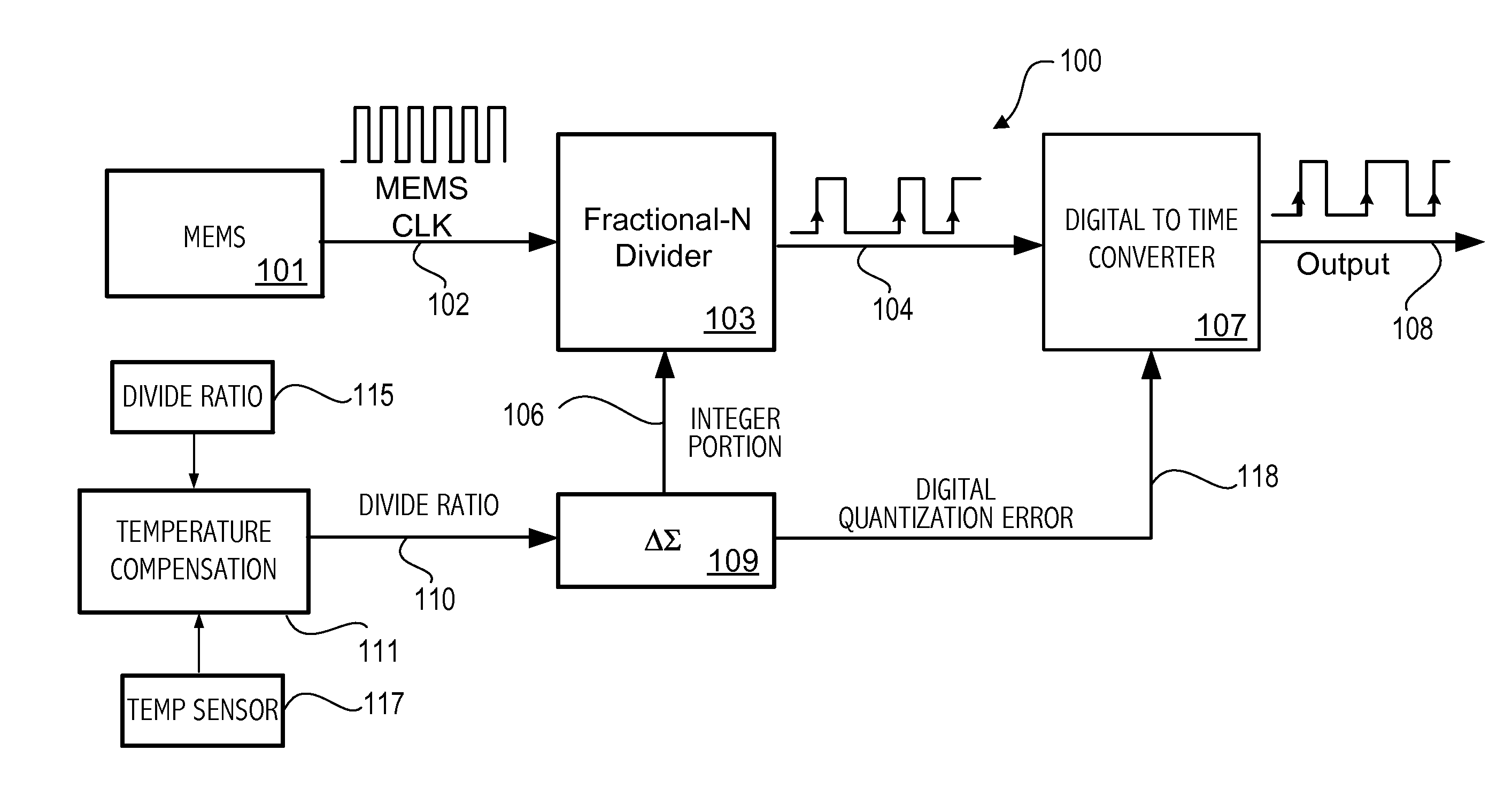Time-interleaved digital-to-time converter
a digital-to-time converter and interleaved technology, applied in the direction of pulse counters, pulse manipulation, pulse techniques, etc., can solve the problems of requiring precise duty cycles of reference clocks or long absolute delays of prior art approaches
- Summary
- Abstract
- Description
- Claims
- Application Information
AI Technical Summary
Benefits of technology
Problems solved by technology
Method used
Image
Examples
Embodiment Construction
[0015]FIG. 1 illustrates an exemplary system 100. The system includes a MEMS oscillator 101 that supplies a reference clock signal 102. A fractional-N divider 103 receives the MEMS clock signal 102 and divides the MEMS clock signal and supplies the divided signal 104 to a digital-to-time converter (DTC) 107 for phase interpolation to adjust the output of the divider 103. A delta sigma modulator 109 controls the fractional-N divider and generates an integer portion 106, which is used as a divide value by the divider 103. The delta sigma modulator 109 receives a divide ratio 110. Because the MEMS oscillator may be sensitive to temperature variations, a temperature sensor 117 and compensation circuit 111 may be used to adjust the divide ratio 110. The digital divide ratio may be stored in memory 115 associated with compensation circuit 111. The integer portion generated by the delta sigma modulator 109 is supplied to the fractional-N divider 103 as divide control signal 106 in a stream...
PUM
 Login to View More
Login to View More Abstract
Description
Claims
Application Information
 Login to View More
Login to View More - R&D
- Intellectual Property
- Life Sciences
- Materials
- Tech Scout
- Unparalleled Data Quality
- Higher Quality Content
- 60% Fewer Hallucinations
Browse by: Latest US Patents, China's latest patents, Technical Efficacy Thesaurus, Application Domain, Technology Topic, Popular Technical Reports.
© 2025 PatSnap. All rights reserved.Legal|Privacy policy|Modern Slavery Act Transparency Statement|Sitemap|About US| Contact US: help@patsnap.com



